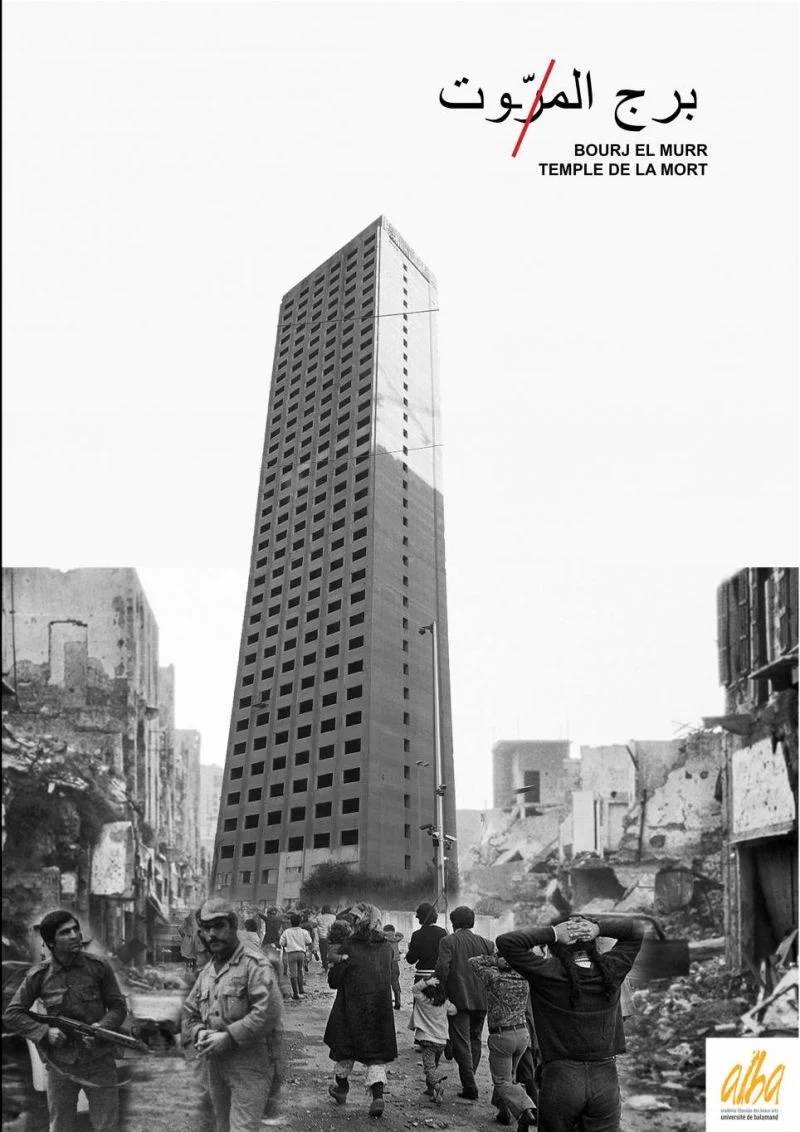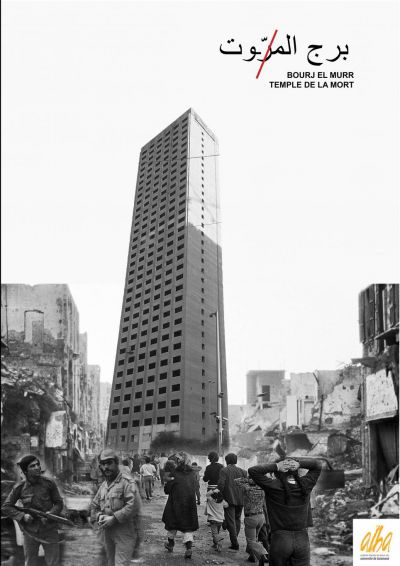
Sarah Soubra’s graduate diploma project turns the Murr Tower into a vertical cemetery (Credit: DR)
“The idea of a cemetery is a local contextual response to the needs of the city’s inhabitants. In densely populated Beirut, finding one’s final resting place will soon no longer be possible,” explained Sarah Soubra, a young architect who recently graduated from the Lebanese Academy of Fine Arts (ALBA).
“Cemeteries are saturated and there is not enough public space to create new burial places,” she added.
She has her eyes set on an idle structure: the Murr Tower, “without any clear vision in mind, since all attempts to transform or modify it have been rejected,” Soubra said.
“This huge place can be converted into a necropolis and spaces where families can gather and meditate,” she added.
According to her project, a vertical cemetery with a horizontal extension would be the solution, with an area of 22,040 square meters, of which 16,530 would be dedicated to vaults and 1,650 square meters to funeral receptions.
The cemetery, which would be equipped with a 1,075-square-meter parking lot, would be adapted to the two major religions practiced in the capital, i.e., Christianity and Islam.
It would also offer all mortuary rituals, including purification, sacralization and burial, as well as a crematorium and prayer rooms.
The mirror of life
As she worked on the idea of her project, the young graduate referred to the French philosopher Michel Foucault’s concept of a “heterotopic” space, which defines heterotopia by six principles among which an accumulation of “chunks of times” and spaces, of which one example is the cemetery in the city.
Soubra explained that according to Foucault, “the closest form to the explanation of the heterotopia concept is the mirror, a surface that does not really exist, but that reflects the world in which we are. Now death is the mirror of life. Foucault’s mirror generated the whole idea of my project.”
The funeral complex would be composed of two cemeteries, divided according to religion. One vertical one served by elevators would occupy the floors of the tower which will be hollowed out from the inside.
The other would be sunk into the ground and would point in the direction of Mecca. The section in the middle separating the two cemeteries would include all the stages of preparation of the dead for burial or cremation and offer all the amenities to pay a last tribute to the deceased.
Designed in the shape of an S, the entire project would be set in the middle of a small forest that the architect calls “purgatory.”
A small building, detached from the mortuary complex, would contain a funeral library and the offices of the administration that would manage the place.
Skyscraper cemeteries?
The Murr Tower, a structure of more than 40 floors, was the favorite spot for snipers during the 1990-75 Civil War. It also served as a base for militias during the so-called “war of the hotels” in 1975.
The tower’s construction, which started in 1974, was never completed. The developer “Société libérale SAL” is 62 percent owned by Michel Murr and 38 percent by his brother Gabrial Murr.
In 1994, the tower was included in the plans of Solidere, which bought it from the Murr brothers with a view to rehabilitating it in order to turn it into a Beirut Trade Center or to serve as headquarters for the ESCWA.
But the structure turned out to be defective, and the architects commissioned by Solidere advised that it be demolished by implosion.
No measures, however, were taken and the concrete skeleton still stands today.
Will the Murr Tower become a skyscraper cemetery?
According to the Associated Press, since the mid-1990s, high-rise cemetery projects have been under study in Mexico City, Paris, Bombay and Verona, Italy.
In Brazil, there is already one of the largest vertical cemeteries: The Memorial Necrópole Ecumênica. With a surface area of 40,000 m2, its forests and its high quality services, this monument is the largest, highest and most complete vertical cemetery in the world. It has been registered in the Guinness Book of Records since 1991.
This article was originally published in French in L'Orient-Le Jour. Translation by Sahar Ghoussoub.
